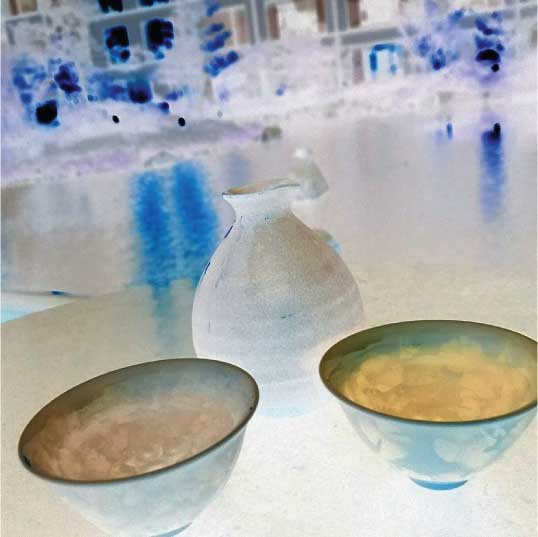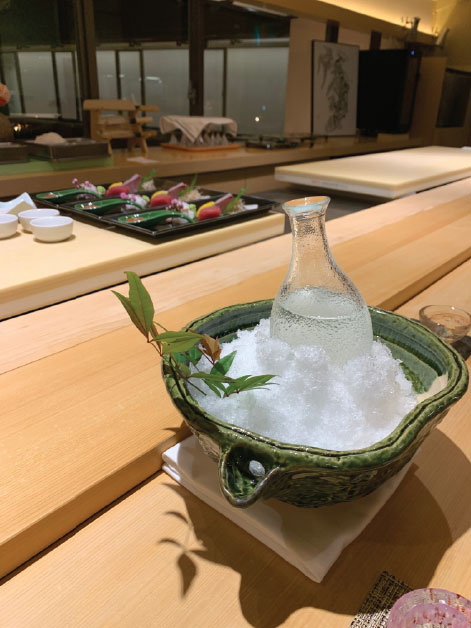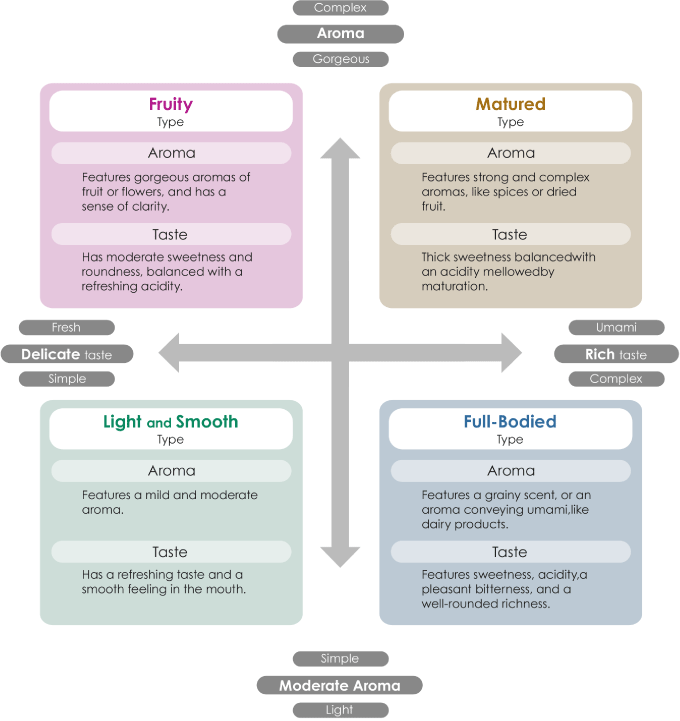The character of a Japanese Sake can be classified into four types.
The unique character of Sake aroma is the because of different production methods, ingredients and water. These characters can be classified into four types. Of course everyone’s ideas and feelings are different and, like wine, it comes to your personal experience. In wine tasting, the taster first smells the aroma directly from the glass, then swirls the wine to allow contact with air and smells it again. A tulip-shaped wine glass is ideal for this purpose. The sides of a kikichoko, however, are straight, as the tasting procedure usually does not include swirling.
The Japan Sake and Shochu Association has kindly put together a basic guide to Japanese Sake aroma, please use these flavor profiles as a starting point to help describe the aroma (and taste) of Sake.
No.1: Japanese Sake Likened to Sweet Fruits
Ginjo & Daiginjo Sake has a sweeter aroma that is similar to certain tree fruits. These aromas are likened to apple, pear, melon banana and white peach.
No.2: Japanese Sake Likened to Sour Fruits
Other Japanese Sake has an aroma that is similar to citrus fruits such as lemons, grapefruit, strawberries and oranges. Use them to describe the sort of sour aromas that burst in the mouth.
No.3: Japanese Sake Likened to Rice
Junmai-shu Sake has more of an aroma that is directly linked to rice and is the usual way to describe this type of Sake.
If you are having difficulty imagining the smell of rice, it may help to think about rice pudding, risotto or freshly made steamed rice.
No.4: Japanese Sake Likened to Flora
Sake which has not been pasteurised, for example Nama-zake (raw Sake), have a lighter aroma that is similar to flowers and herbs. Think about jasmine, tea leaves, mint and cinnamon.

picture from http://www.japansake.or.jp/sake/english/howto/aroma.html
SakePortal hopes this short guide will help you to further enjoy the taste and feeling of Japanese Sake!
 Previous Article
Previous Article Next Article
Next Article
- Categories:
- Share :
 Previous Article
Previous Article Next Article
Next Article
